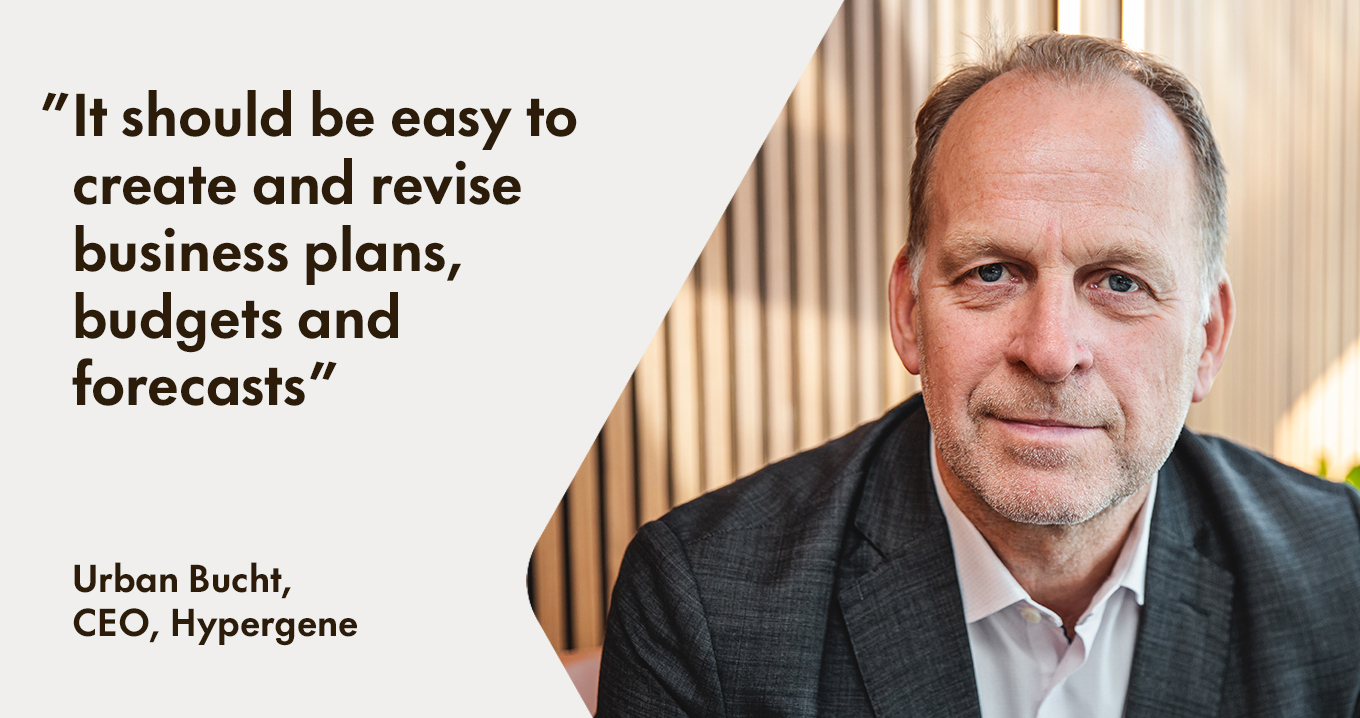How to Digitalise Plans and Follow-up: “Think of it as a staircase”
Digitalisation affects all businesses. The goal is often flexibility and more efficient processes – especially as the world around us becomes increasingly unpredictable. Hypergene, with its Cloud-Based Planning and Performance Management solution, is at the forefront of this development. To make the most of digitalisation, you need to take some key steps in the right order.

“Many companies work with business planning, budgeting, and follow-up in a way that is not always coherent. Our solution simplifies processes, improves quality, and helps companies steer towards their goals,” says Urban Bucht, CEO of Hypergene.
Digitalisation continues to accelerate, and many other aspects of society are also changing rapidly. This makes it more important than ever to have the right decision-making support and flexibility in your planning processes.
“The goal should be for corporate plans, budgets, and forecasts to be easy to produce – but also easy to revise. In addition, managers and leaders need the right basis for decision-making. It may sound easy in theory, but it's often difficult for larger businesses.”
Five Steps to Success
Digitalising your planning, follow-up, and analysis processes creates new opportunities, Bucht continues, and there are five steps to optimise the development journey. The first step is Financial Management.
“Financial and human resources data, while digital, is often stored in separate systems or Excel models that serve different functions. This makes it difficult to work with. Hypergene’s integrations and automated workflows enable you to quality-assure and streamline your budgeting and forecasting.”
Step two is to introduce support for Business and Operational Planning. Because with Financial Management in place, it’s easier to ensure that your strategy and control model function in everyday work. Defining and prioritising the company’s KPIs is an important component. Only when these are in place will you know what needs to be measured and followed up to get the company moving in the right direction. “Hypergene creates new opportunities here too,” Bucht adds.
Step three entails compiling more operational data: Translating data and information into reports that support analysis and decision-making. It's about being able to identify signals early on and quickly make changes if necessary.
Step four focuses on working effectively with both quality work and change. “Now it’s about optimising and improving processes, flows, and how information is made available,” Bucht says.
Once that’s in place, step five incorporates intelligent systems that suggest solutions, based on technologies such as machine learning and AI. Bucht points out that this will be a natural part of decision-making in the future.
“It's like a staircase. The important thing is that you have a product that really supports your needs and allows you to take steps at your own pace.”
A System for New Times
Hypergene has customers in most industry segments, and something the pandemic has made clear to all is the importance of having the right system support in place.
“In the future, it will be increasingly important to have the capability to update plans quickly, work with Rolling Forecasts, and share decision-making documentation,” Bucht concludes.
Hypergene's software provides Decision Support through the collection and presentation of business data to management teams, managers, and those who need to stay on top of Operational Management. Hypergene helps you make decisions, steer towards goals, and achieve higher levels of performance and efficiency.
7-minutes video demo of Hypergenes solution:



